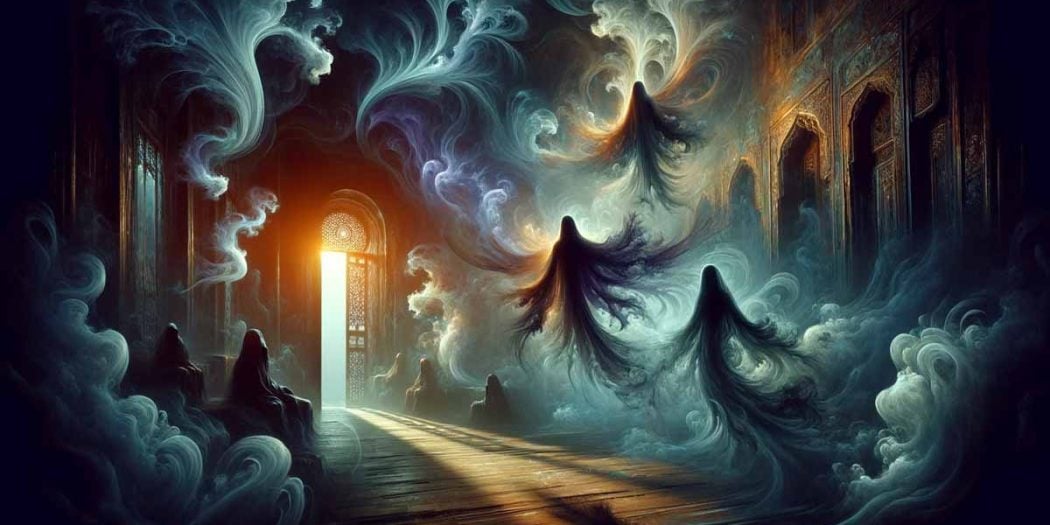Muslims generally don’t believe in ghosts and demons. Everything supernatural is attributed to the jinn
Introduction
The concept of ‘Jinn’ is deeply interwoven into the fabric of Arab folklore, tracing its origins well before the emergence of Islam. Derived from the Arabic root ‘j-n-n,’ the term ‘Jinn’ traditionally signifies concealment or obscurity, reflecting the mysterious essence of these entities. In pre-Islamic Arabian culture, jinn were perceived as enigmatic forces of nature and the unknown. They were revered and feared in equal measure, often believed to inspire poets, astrologers, and witches through their elusive whisperings. The introduction of Islam brought a new dimension to the understanding of jinn, integrating and reinterpreting these ancient beliefs within its theological framework.
The Nature of Jinn: A World Parallel to Ours
Ancient Arab beliefs posited that, unlike humans, who were created from clay, jinn were formed from smokeless fire, a concept that imparts a sense of their ethereal and elusive nature. Jinn are believed to inhabit their own hidden realm, invisible to human eyes. Both folklore and religious texts present differing views on the nature of the relationship between the realms of jinn and humans. There’s a general consensus that jinn can see humans. However, opinions diverge regarding humans’ ability to see jinn. Some believe that humans, with the exception of prophets, cannot see jinn in their true form. In contrast, another perspective suggests that humans can indeed see jinn, especially when these beings choose to take on a form different from their original one.
The realm of jinn possesses characteristics that, in certain aspects, mirror those of human society. Just as humans form nations, tribes, and adhere to various religions, so too do jinn. Their society is believed to be structured, comprising various tribes and communities, each with its own culture, norms, and even spiritual beliefs. This parallel extends to the moral compass governing their actions; within their ranks are the benevolent and the malevolent, the righteous and the wayward, much like the human populace.
Jinn in Islamic Theology: Beyond the Veil of the Unseen
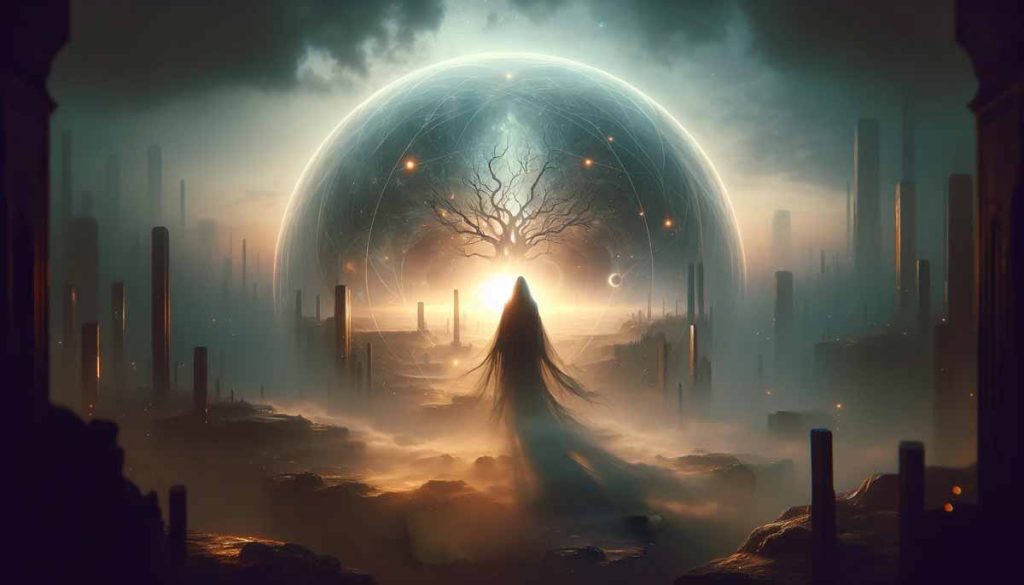
In the tapestry of Islamic theology, jinn occupy a pivotal space, their existence intricately intertwined with the core of faith. The belief in jinn within Islam transcends cultural myths or folklore, venturing into the realm of the unquestionable. Their presence is firmly established in the Quran and the sayings of Prophet Muhammad, bestowing upon them a dimension of religious significance that is both profound and integral to the Islamic worldview.
The Quran elucidates the nature of jinn, portraying them as beings with free will, much like humans, capable of both righteousness and sin. One of the most poignant references to jinn in the Quran is found in Surah Al-Jinn (Chapter 72), offering direct insight into their acknowledgment of the divine and their societal structures. For instance, verse 72:11 states, “Among us (jinn), there are some that are righteous, and others that are quite the opposite. We follow diverse (and divergent) paths.” This verse encapsulates the diversity of the jinn, highlighting their capacity for belief and disbelief, as well as their complex societal dynamics, mirroring the human condition in their pursuit of righteousness or deviation.
Much like humans, jinn are believed to have a limited lifespan. Though it is often thought that they live longer than humans, they ultimately face mortality and are held accountable for their deeds. The righteous among them are said to ascend to heaven, while those who have chosen the path of wrongdoing face their own form of torment.
What do we know about the mysterious world of jinn?
In the rich tapestry of Arab folklore, jinn are not mere spectral figures but entities deeply embedded in the cultural and spiritual life of the people. Their perceived supernatural abilities and the roles they play in various narratives reflect the complex relationship between humans and the unseen world.
The most salient characteristics and abilities attributed to jinn in Arab beliefs include:
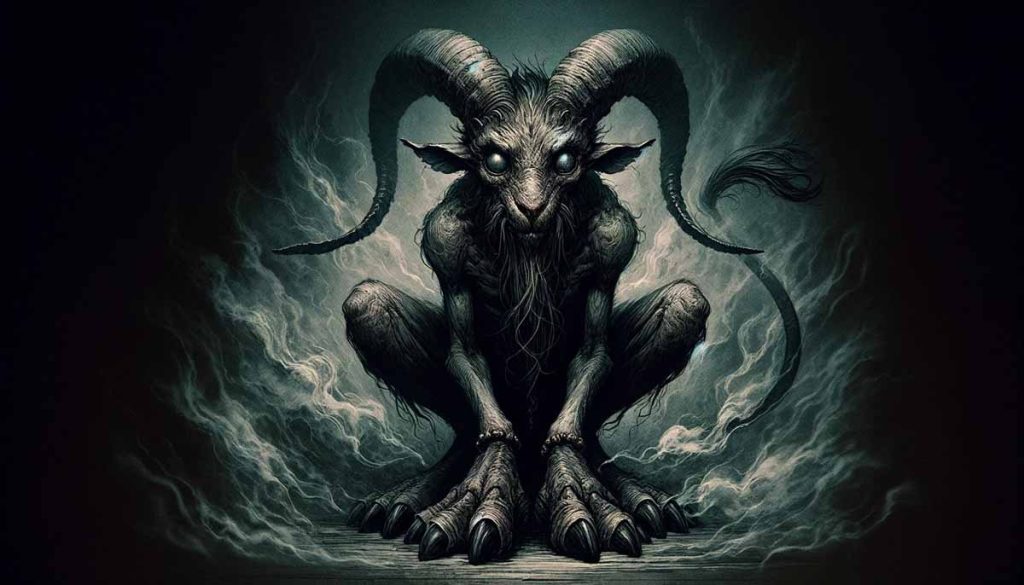
Shape-shifting: The ethereal nature of jinn allows them to take on various forms, both alluring and terrifying. The ‘Sila’ and the ‘Ghoul’ are quintessential examples. The ‘Sila‘ is believed to appear in deserts as a beautiful woman, beguiling lone travelers into perilous or even deadly situations. Conversely, the ‘Ghoul’ is thought to inhabit graveyards, feeding on human flesh and instilling fear in the hearts of those who dare to venture near their domains. Among the most common forms that jinn are believed to take are the serpent and the black cat. Thus, avoiding the killing or harming of such creatures was not just out of respect but also fear of retribution from their kin, acknowledging the interconnectedness of all beings, seen and unseen.
Poetic Inspiration and Possession: The connection between jinn and the realms of creativity and madness is profound. Poets of yore often attributed their eloquence and inspiration to a resident jinn whispering verses. This belief extends to the notion of possession, where the term ‘majnun’ (possessed by jinn) encapsulates the idea that jinn can inhabit and influence human thoughts and behavior, linking the condition of madness with the influence of the unseen. The belief in possession is still widespread, with many psychological conditions, mental and behavioral changes, or even failures in relationships and work, being linked to jinn possession.
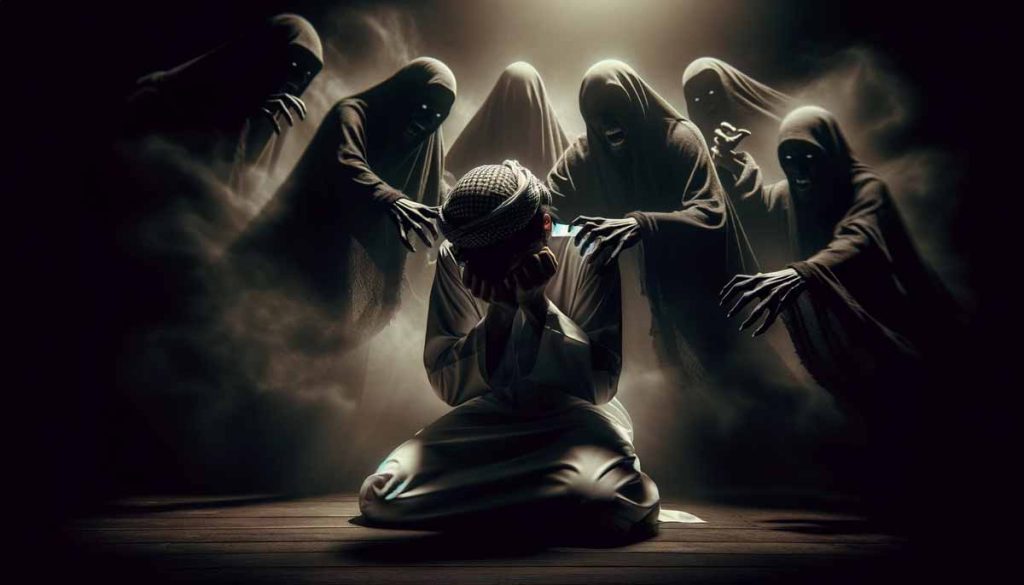
Occult: The narrative that jinn assist sorcerers and soothsayers, conveying secrets pilfered from the heavens, weaves together the realms of the divine and the occult. This belief underscores the complex role of jinn as intermediaries between the celestial and terrestrial realms. In Islamic thought, it is believed that the advent of Prophet Muhammad put an end to such celestial eavesdropping, highlighting the transition of understanding and interaction with the unseen.
Habitats and Haunting: Desolate places, ancient homes, and graveyards are often perceived as domains preferred by jinn, a belief that adds layers of mystery and caution to such locales. Unlike the concept of ghosts, which is not prevalent in Islamic thought, these places are not haunted by human spirits but are considered abodes of jinn, further emphasizing the cultural distinction between the concepts of jinn and ghosts.
The Lover Jinn : Perhaps one of the most intriguing and enduring beliefs is that of the ‘Lover Jinn’ a being that might develop a profound affection for a human. This concept has woven itself into countless stories and even the notion of possible marital and familial bonds between humans and jinn, reflecting the deeply embedded belief in the intimate, albeit complex, interaction between the seen and unseen worlds.
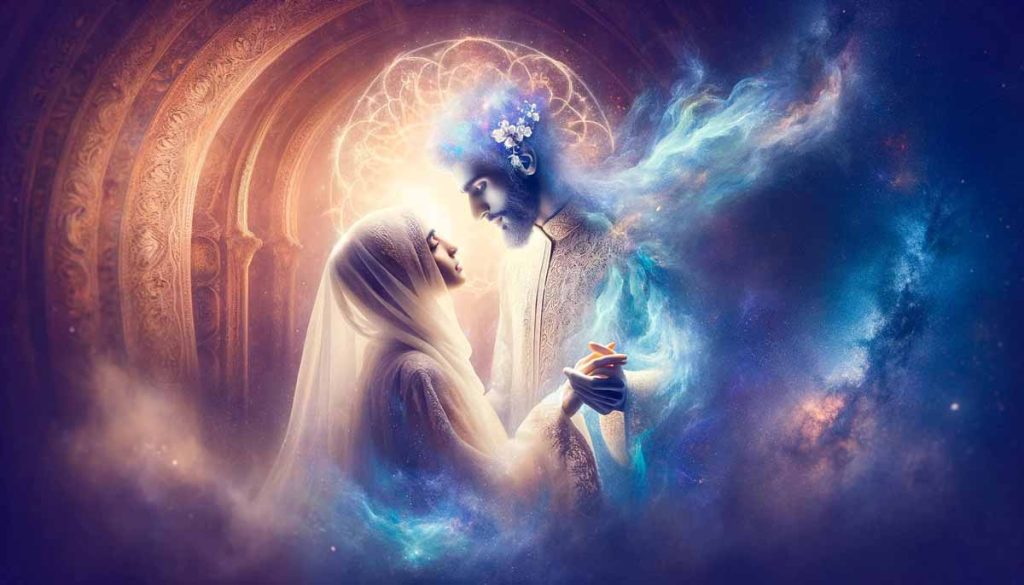
Jinn and Natural Phenomena: In some traditions, jinn are associated with natural phenomena such as whirlwinds, sandstorms, or mirages in the desert. These natural events were sometimes interpreted as manifestations of jinn activity, symbolizing their power and the unpredictable nature of their interaction with the physical world.
Jinn in Medicine and Healing: In traditional healing practices, illnesses were sometimes attributed to the influence of jinn. Healers or exorcists, known as ‘raqis,’ were sought to treat such ailments through rituals, prayers, or amulets, reflecting a blend of spiritual and medicinal practices.
Jinn in World Literature: Bridging Cultures and Imagination
The allure of jinn transcends regional folklore, casting its spell on world literature and captivating global audiences. Perhaps the most iconic literary manifestation of jinn is found in “One Thousand and One Nights,” known in the West as “Arabian Nights.” This collection of Middle Eastern folk tales has mesmerized readers for centuries, with jinn playing pivotal roles in some of its most beloved stories.
The Genie of the Lamp: The tale of Aladdin and his wondrous lamp is universally known, with the genie (jinni) emerging as a symbol of unbounded power and the complexities of wishful thinking. This story, among others from the compilation, has been adapted countless times across various media, reflecting the universal appeal and enduring fascination with the mystical and the magical that jinn embody.
Beyond the Lamp: Jinn in “One Thousand and One Nights” are not limited to granting wishes. They appear in multifaceted roles, sometimes benevolent, sometimes vengeful, always enigmatic. These stories convey a spectrum of moral and ethical narratives, highlighting the nuanced portrayal of jinn as more than mere wish-granters but as entities with their own tales, tribulations, and interactions with humanity.
Including these literary references provides a bridge between the historical-cultural significance of jinn and their enduring presence in the collective imagination, showcasing the depth and diversity of these supernatural beings in human storytelling.
Modern-Day Beliefs and Interpretations: The Resilience of the Jinn Narrative
In the modern era, far from being relegated to the pages of ancient texts or the realm of folklore, the belief in jinn remains robust and influential. This enduring belief manifests in various aspects of contemporary life, from spiritual practices to popular culture.
The Thriving Market of the Occult: The belief in the ability of certain individuals, often termed as sorcerers or occult practitioners, to harness and command jinn for various purposes, remains prevalent. These practitioners claim to offer services ranging from healing and protection to casting spells, reflecting the dual nature of jinn as agents of potential good or mischief. This market is not just a cultural relic but a thriving part of the economy in some regions, illustrating the deep-rooted belief in the power and influence of jinn.
Spiritual Healing and Exorcism Practices: Parallel to the world of sorcery is the realm of spiritual healing, where ‘raqis’ or sheikhs specialize in treating ailments believed to be caused by jinn possession. Similar to exorcism practices in Christianity, these rituals are deeply ingrained in the cultural fabric and are sought after by many who prefer traditional spiritual remedies to modern medical interventions.
Cultural Practices and Superstitions: Everyday life is peppered with practices and superstitions stemming from beliefs about jinn. For instance, the caution against pouring hot water in bathrooms without reciting a prayer stems from the belief that jinn inhabit such spaces, and careless actions might provoke their wrath. Such practices highlight the integration of jinn beliefs into the minutiae of daily life, underlining the unseen presence of these entities in personal and communal spaces.
Jinn in Media and Arts: The narrative of jinn has found vibrant expression in cinema, television, and literature, capturing the imagination of audiences far and wide. From the spine-chilling Turkish horror series “Siccin” to Egyptian cinema’s portrayal of jinn in films like “El-Ins Wal Jinn,” the depiction of these supernatural beings caters to a universal fascination with the unseen and the mysterious. These works not only entertain but also reflect and shape the collective understanding of jinn, blurring the lines between traditional beliefs and modern interpretations.
The narrative of jinn, with its complex interplay of fear, reverence, and curiosity, continues to thrive in the modern world. It bridges the past with the present, the spiritual with the mundane, and the cultural with the universal, demonstrating the enduring allure of the unseen and the unexplained in the human psyche.
Jinn Across Cultures: A Comparative Perspective
The concept of jinn, while deeply rooted in Arabic and Islamic tradition, shares intriguing parallels with supernatural entities across various cultures and religions. These similarities and differences offer a fascinating glimpse into how different societies interpret the unseen and the mysterious.
Jinn and Ghosts: In Western culture, ghosts or spirits of the deceased are common in folklore and are believed to inhabit or haunt certain spaces. While both jinn and ghosts represent an unseen presence, jinn are not spirits of the dead but rather a distinct creation, made from smokeless fire, capable of good and evil, much like humans. This distinction emphasizes the unique nature of jinn as entities separate from the human soul.
Jinn and Demons: The concept of demons in Christianity and other religions bears some resemblance to jinn, particularly in their ability to influence or possess individuals. However, while demons are often exclusively malevolent, jinn have a more nuanced nature in Islamic belief, capable of a wide range of moral behaviors, from benevolence to malevolence.
Jinn and Fairy Folklore: The jinn’s ability to shape-shift and their interaction with humans draw parallels with fairy folklore in Europe, where fairies and other mythical creatures have complex relationships with humans, including both helpful and harmful interactions. Similar to jinn, these entities occupy a parallel world and possess powers that can impact human lives in various ways.
Jinn and Yokai in Japanese Folklore: Similar to the vast and varied world of jinn, Japanese folklore features Yokai, a class of supernatural beings with a wide range of characteristics and intentions. Like jinn, Yokai can be benevolent, malevolent, or simply mischievous, impacting human lives in multifaceted ways.
In exploring these cross-cultural parallels, it becomes evident that the concept of jinn, while unique in its origins and characteristics, shares universal themes with other cultural interpretations of the supernatural. These similarities reflect a common human fascination with the unseen world, a testament to the rich tapestry of human imagination and the enduring allure of the mysterious.
 kabbos
kabbos
